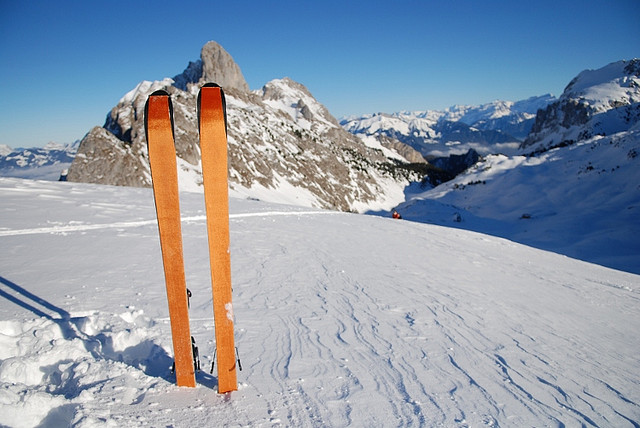
In 1988, there was a revolution in the ski industry. Previously, skis had been straight-edged and the skier controlled them through force and incline. The new shaped skis were parabolic, with a side-cut edge that caused the ski to turn when introduced to the snow. Pressure causes the ski to bend: more pressure, more bend, tighter turns.
The whole way of skiing changed as a result. The stance got wider, the centre of gravity, lower. The turn became a way to accelerate, rather than a way to stop.
But the French wouldn’t let a little thing like physics get in their way. They adopted the parabolic skis but continued to ski upright, legs close together, weight slightly back, cigarette and/or cellphone optional. They still managed to achieve impressive speeds – to even qualify as a ski instructor in France, you need to pass the “Test Technique” skiing within a percentage of the time of a professional skier – but they ski like no one else in the world.
When talking about innovation, we often see what I call “The French Ski Problem,” the risk of focusing on novelty without application, rather than incremental improvements somewhere more widely applicable.
If you are an innovator in the ski industry, you could make:
- Improvements to parabolic skiing: Useful to everyone.
- Improvements to straight ski technique on parabolic skis: Useful only in France.
- Improvements to straight ski skiing: Not useful anywhere.
To which you might ask, who is worrying about (2) or (3), and the answer in skiing is: I have no idea. But in Software, (1) are human problems, (3) are made up engineer problems, and (2) is the nebulous space in between – often real solutions, to niche problems.
(3) is infrastructure with no human benefit, because nothing actually wins out on technical superiority (e.g. that test framework that nobody actually uses). (2) is infrastructure with human benefit, that allows for better speed, or increased stability (e.g. Twitter’s move of their infrastructure, it’s been a long time since I saw the Fail Whale). And (1) addresses the pain points of real humans, allows them to do their jobs better, live richer lives (e.g. the invention of the smartphone). This is where we connect people to the people they love, even when they are thousands of miles apart. Where we make sense of huge quantities of data, so that they can make better decisions, or have improved medical care. Where we create platforms that allow people different and novel ways to make a living.
My main point here is impact. A small incremental improvement of (1), is vastly more impactful than anything done at (2), let alone (3).
A question to ask is, are we building infrastructure, or are we building a product (1)? If we’re building infrastructure, does it enable the product (2), or are we just… building infrastructure (3)?
Real innovation doesn’t happen in a vacuum, it comes from solving problems. There’s a reason why incredible earthquake preparedness innovation comes out of New Zealand, that mobile innovation is brightest in the developing world (where cellphones are often people’s primary, or only device), and Silicon Valley is an endless source of products for rich young men.

3 replies on “The French Ski Problem”
Some thoughs on innovation, combined with nerding out about skiing – The French Ski Problem http://t.co/YMFl2YQqWZ
RT @catehstn: Some thoughs on innovation, combined with nerding out about skiing – The French Ski Problem http://t.co/YMFl2YQqWZ
ICYMI, I nerded out about skiing whilst writing down some thoughts on innovation – http://t.co/YMFl2YQqWZ